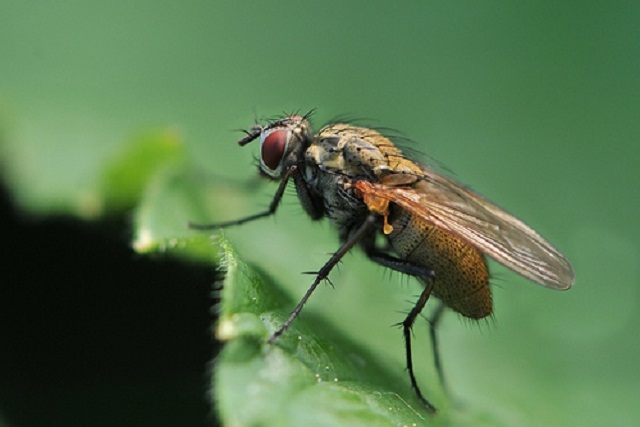
Cabbage fly refers to insect pests. Her larvae damage the root system of the cruciferous, which leads to the rapid withering of the cabbage. It is problematic to bring this fly out, so gardeners advise taking certain preventive measures that will help to avoid its appearance. But such actions do not always give a 100% guarantee, as a result of which you need to know the signs of damage to the plant by this insect and methods for its destruction.
Content
The appearance of the cabbage fly
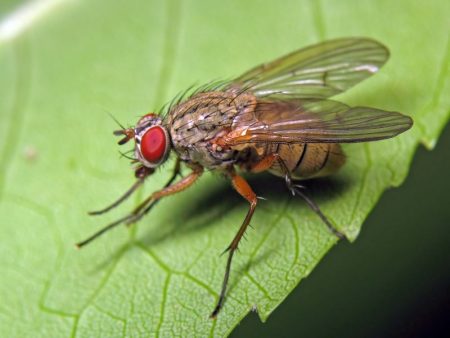
There are 2 types of pest, which differ only in size - spring and summer fly.
The main characteristics of the appearance of an adult pest:
- coloration is ash gray, and in males it is slightly darker;
- length - 6 mm (spring), 7.5 mm (summer) and 5.5 mm (males);
- the abdomen has an elongated ovoid shape with a pointed apex;
- along it runs a wide strip of black. At the base, it expands, and tapers to the posterior edge of the segments;
- on the back there are 3 dark longitudinal stripes;
- males have a narrow transverse dark strip on each segment, and females have brown tapered spots;
- the width of the eyes of the females is equal to the width of the forehead, and in males it is 4-5 p. more;
- in females, 1 hair is located at the base of the hips, and in males there are much more.
The insect larvae have a thick yellow or white body 8 mm in size. It is narrowed at the front, and at the back ends with an oblique cut. Through the transparent cover of the head end, 2 symmetrical black hooks are visible.
Larvae, and not adult individuals of cabbage flies, cause cruciferous harm, since it is they who feed on the green roots of cabbage, damaging their integrity.
Reasons for the appearance
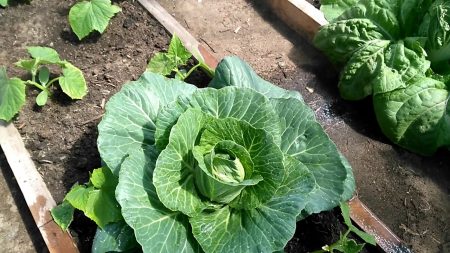
From late April to mid-May, females of spring flies begin to lay eggs (each individual is approximately 150 pcs.) On the root neck of the cabbage or near it in the surface soil layer. The peak of this process is the lilac flowering time. The soil temperature should be 9-10 degrees. After 7-10 days, larvae appear from them. They feed on the green roots of the plant and destroy the core of the stems.
Summer flies appear at the end of the first summer month, when the air temperature exceeds 18 degrees, so their larvae pose a threat to the harvest of late cabbage.
The factors that contribute to the occurrence of the pest in the household plots are unknown, therefore, gardeners recommend periodically inspecting the planted culture for the presence of eggs of the cabbage fly. This will help to take timely measures to destroy them and save, if not the entire crop, then most of it.
When the larvae appear, it will be much more difficult to save the cabbage. They quickly begin to absorb its roots and the plant completely fades in 3-4 weeks.
Signs of occurrence
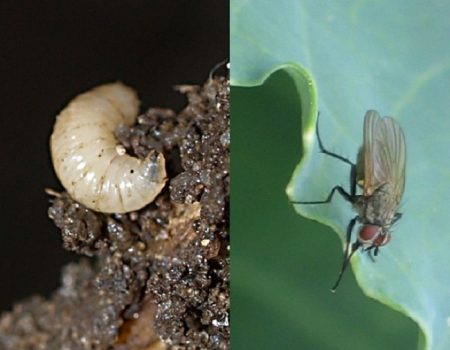
If you notice that cabbage flies begin to fly over your seedlings, then they are either preparing to lay eggs or have already completed this and you need to take steps to eliminate them. Summer residents do not always notice this moment and the hatched larvae begin to gnaw the roots of the plant, as the following signs will indicate:
- the cabbage looks wilted. Some believe that this indicates a lack of moisture in the soil;
- after excessive watering, there is no change.The plant continues to wilt, as its vessels are damaged, and moisture does not enter through them;
- bluish-lead leaves.
If any sign of damage to the garden culture by the cabbage fly is detected, actions to combat it cannot be delayed, otherwise the crop will be lost.
Effective folk remedies
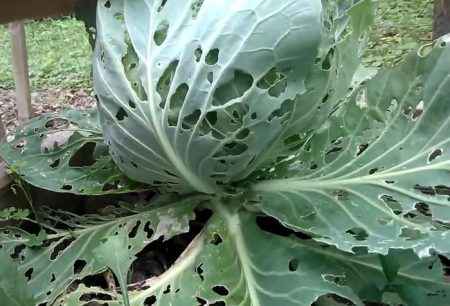
To solve this problem, various chemical products (Zemlin, Karbafos, Lepidotsid, Actellik) are produced, but if they are absent or to increase efficiency, it is recommended to use alternative methods:
- wash seedlings in weak potassium permanganate before planting;
- plant in the intervals between cabbage or along the perimeter of the garden beds that emit odorous elements (garlic, sage, celery, caraway seeds, marigolds);
- spray sluggish plant heads with an aqueous solution of ammonia (5 ml per 10 l of water) or burdock infusion (2.5 kg of leaves are placed in 9 l of warm water and infused for 48 hours);
- sprinkle cabbage with a small amount of a mixture prepared from ground hot pepper and mustard powder;
- in mid-May, the soil is dusted with naphthalene mixed with sand in equal proportions, at a distance of 5 cm from seedlings. When eggs are detected, 6 g of this mixture is poured under each stalk. in 8 days. Such a measure of destruction is carried out 3 p.;
- bury wood ash near the cabbage in the ground or apply dry ash to the plant itself. The procedure is repeated 1 p. in 5 days;
- around the root neck the earth is covered with camphor, slaked lime or wood ash mixed with shag;
- remove old soil and add new, taken from another place, to the stem;
- powder wet cabbage leaves with a dusty mixture. To prepare it in equal proportions mix shag and wood ash. The procedure is carried out with the appearance of morning dew or in the evening;
- spray the seedlings with a solution of valerian (40 ml per 3 l of water) with the addition of laundry soap (2 tbsp. l.) in a grated form. Soap shavings need to be stirred until dissolved;
- for spraying the culture, an aqueous solution of 70% vinegar essence or 9% vinegar (0.5 cups per bucket of water) is suitable.
They also recommend installing a screen, which is used as a translucent mesh (Lutrasil, Agril). It is pulled over the beds, tightly attached to the ground so that there are no gaps. During rain, the net is allowed to be removed, since insects do not fly. Watering is carried out without removing such a screen.
Under the cabbage, you can install special covers made of plastic or cardboard. They make a cutout for the stem. These devices will not allow flies to lay eggs next to the root neck.
Insecticides and alternative methods solve the problem, but they must be used before the cabbage is planted in the ground and periodically as it grows. If you miss the moment of the appearance of larvae and their further transformation into pupae, then it will be problematic to grow a crop due to the birth of new generations of cabbage flies.
Prevention
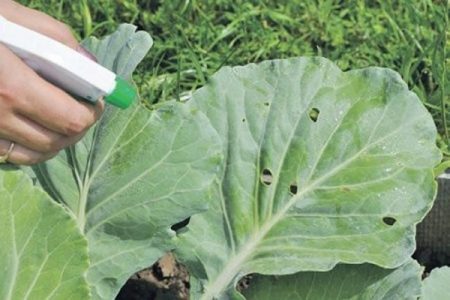
In order to avoid damage to the garden culture by such a pest insect, preventive measures have been developed:
- comply with crop rotation rules (cabbage should not constantly grow on the same beds);
- remove plants on which arrows have appeared;
- carry out measures to prevent the occurrence of wild cruciferous plants, which are weeds (overbig, colza);
- cleaning the site of tops and cabbage leaves, as well as their subsequent disposal outside the garden;
- make sure that along with seedlings the pest larvae are not introduced;
- periodically conduct deep plowing of the beds on which the cabbage grew. This will destroy the maximum number of pupated larvae;
- remove the surface soil layer (10 cm), replacing it with fresh soil taken from another territory;
- treat the roots of seedlings before planting with weak potassium permanganate;
- plant marigold, parsley, celery, coriander and other plants between cabbage or along the perimeter of the bed, emitting odorous elements that repel flies.
Such simple steps will help prevent the emergence of cabbage fly larvae, which will protect your crop from damage.
Advice
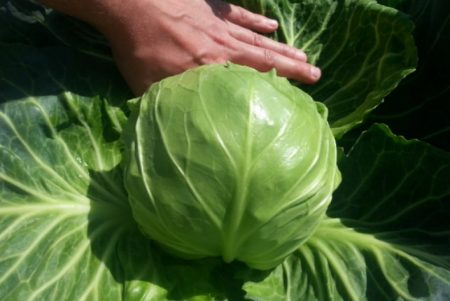
To detect pest eggs, it is recommended to dig the soil near the root neck with a fork. If you notice small white spots, they must be carefully removed from the stem until larvae appear.
According to the advice of gardeners who have encountered such a problem, do not constantly plant cabbage in the same garden. This will increase the risk of cabbage flies. It is also not recommended to plant radishes near, since the pest loves this plant very much. Before planting seedlings, pre-conduct deep plowing and be sure to update the topsoil.
Larvae bring great damage to cruciferous, therefore, the basic rule of combating cabbage fly is compliance with preventive measures. This will not only protect the crop, but also reduce the risk of insects in subsequent years. If you missed the right moment and the pest began to spoil your cabbage, then try to quickly destroy it.

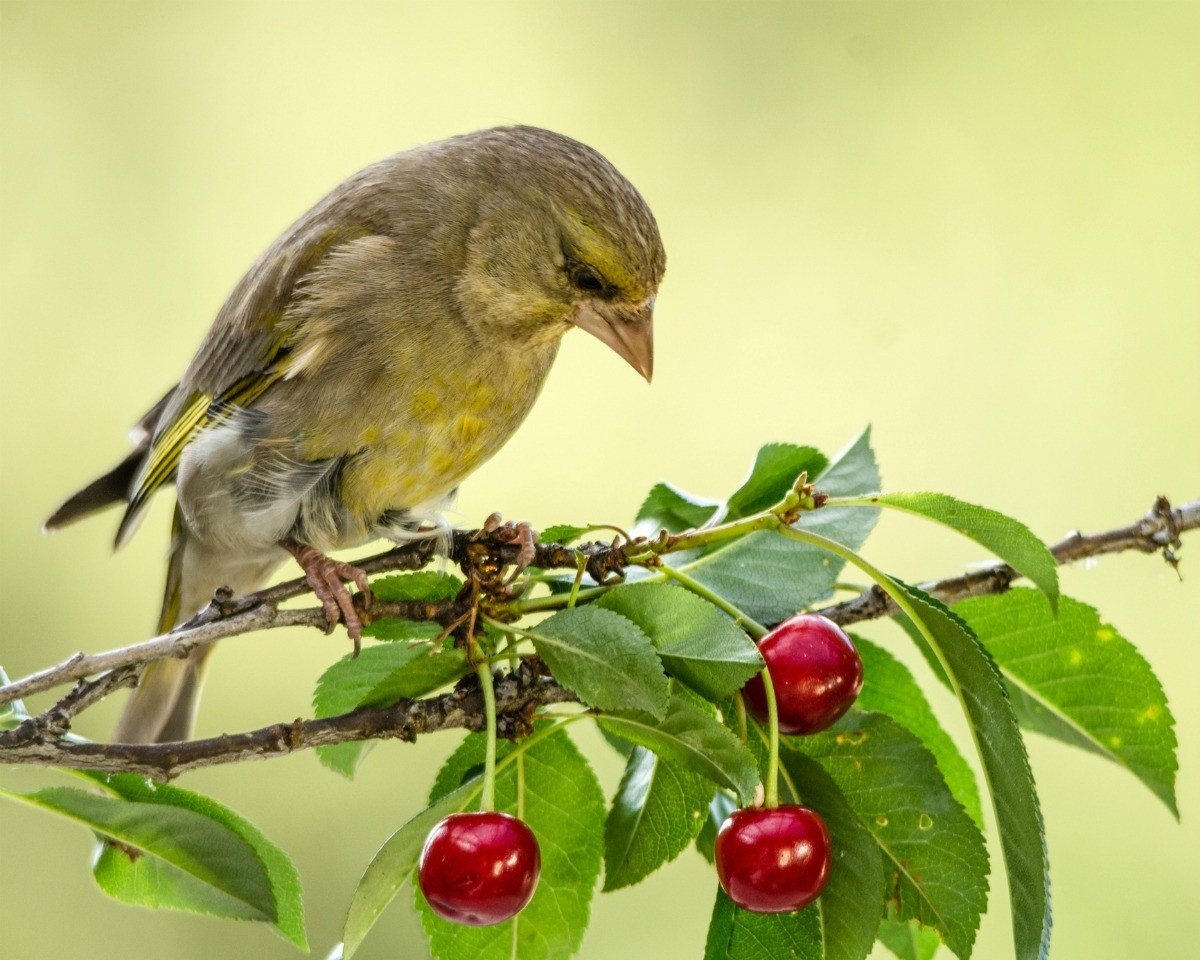
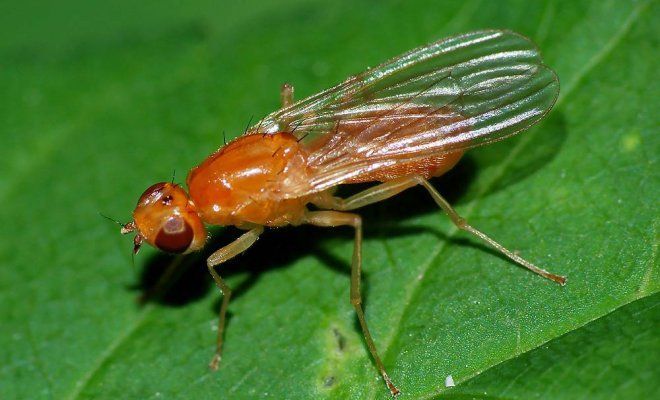
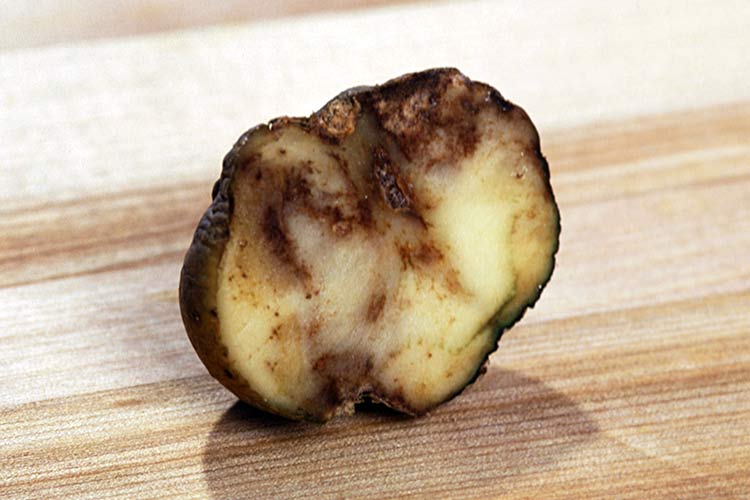
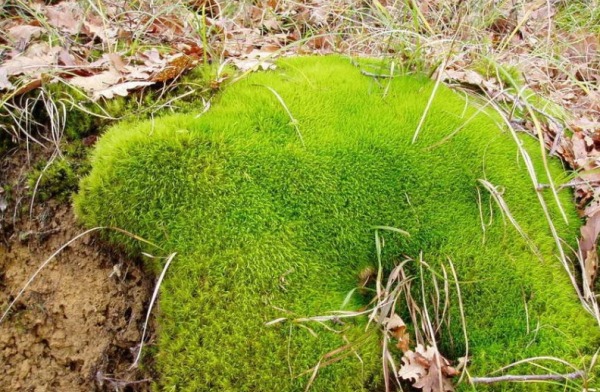 Where does moss come from in the garden and is it necessary to get rid of it?
Where does moss come from in the garden and is it necessary to get rid of it?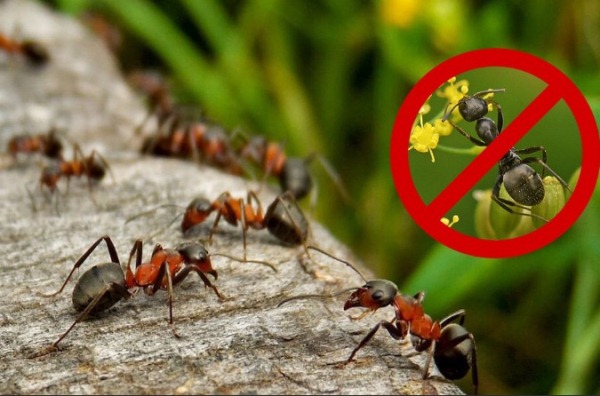 The most effective ways to deal with ants in the area
The most effective ways to deal with ants in the area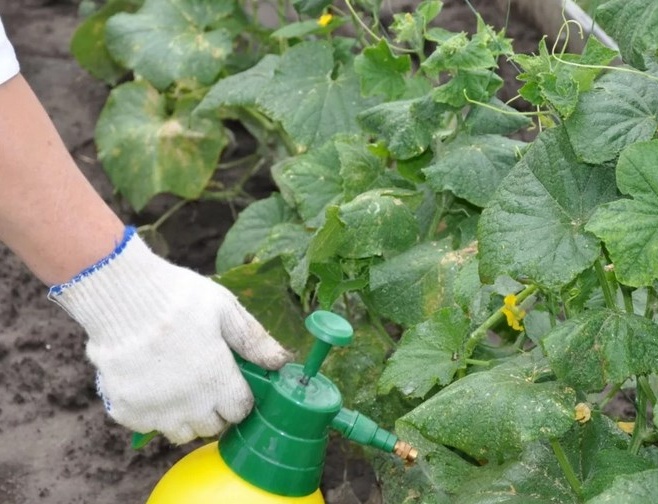 Cockchafer and Bear: An Easy Way to Save Plant Roots
Cockchafer and Bear: An Easy Way to Save Plant Roots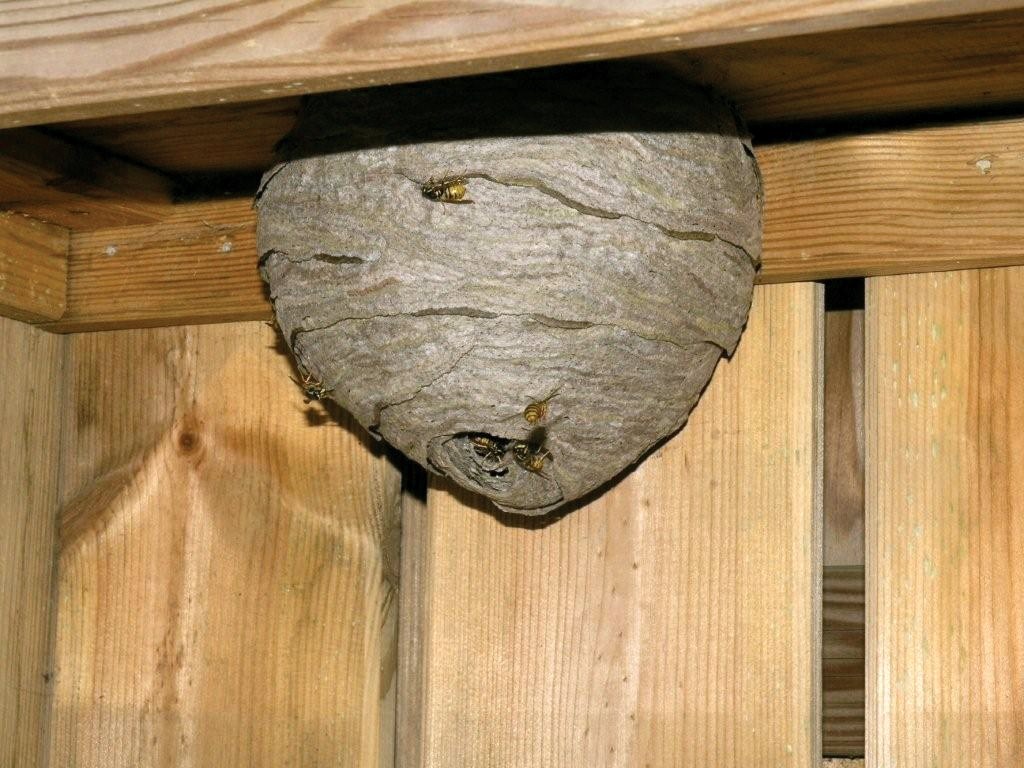 Get rid of the aspen nest quickly and safely.
Get rid of the aspen nest quickly and safely.